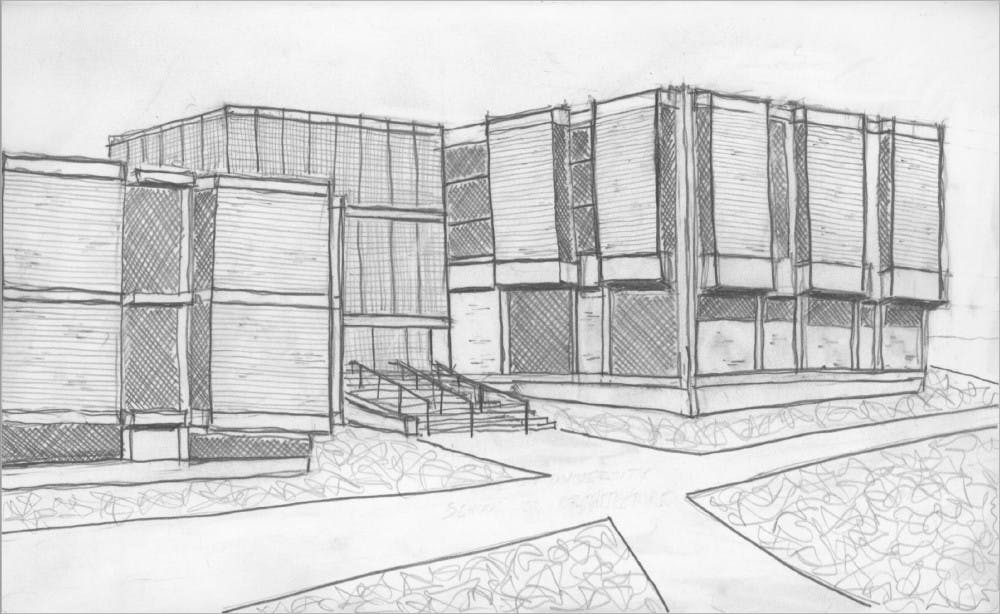The assault on architectural modernism on campus continues.
As happens every spring, tour groups parading around north campus frequently criticize one building: the School of Architecture. Built at the height of architectural modernism in 1963, SoA’s design is frequently described as an aesthetic misfit compared with Collegiate Gothic buildings like McCosh Hall. Some have even gone so far to call it “the ugliest building on campus.”
While I understand that consideration of architecture is subjective, these criticisms all too often possess remarkable superficiality. While they insult the SoA building as ugly, few articulate why they think so or define what they mean by “ugly.” Many claims are presented as objective truths rather than subjective opinions. Instead of, “I find its architecture unappealing,” many declare, “what an ugly building.”
If I were to guess why so many find the SoA unattractive, I would say there are two reasons: its lack of surface ornamentation and its simple brick and glass materials. Both characteristic of architectural modernism, these features do not impress a viewer who craves immediate satisfaction from novel or radical features in architecture.
Nonetheless, those two qualities in the SoA’s architecture are in fact quite moving and reveal the unappreciated power of Modernist architecture, when viewed carefully.
First, the building’s lack of ornamentation is far from a deficit, and instead encourages the viewer to concentrate on the building’s fundamental architectural qualities. Without the distraction of a detailed gargoyle, a viewer may contemplate the building’s remarkable geometric form. The SoA is constructed from an evenly spaced series of enlarged brick slabs, each coplanar with the others. Extending beyond the base of the building, these create a palimpsest, or deliberate overlapping of spatial planes, which creates playful shadows during the late afternoon. Interspersed between these brick walls at regular intervals are vertically high windows, which both permeabilize the surface as a whole and accomplish the goal of separating each wall segment from its neighbor. In sum, a lack of decoration on the SoA building’s facade hardly takes away from its aesthetic value; rather, it encourages the viewer to appreciate its profound sense of balance and rhythm.
Likewise, SoA’s unadorned brick material is enthralling. From years of exposure to the seasons, these bricks have attained a weathered consistency. These real bricks, unlike the artificial material that clothes Lewis Library, show aging and impart the building with a profound aura of timelessness. Furthermore, their rugged opacity is highlighted by juxtaposition with transparent glass windows interspersed between. Such a visual contrast demands the viewer to ponder the contrast between physicality and immateriality. Together SoA’s simple brick and glass construction is not ostentatious, but nonetheless produces an intense materiality that can be enticing to the patient viewer.
In describing the SoA this way, I hope to show that many of the qualities that some deride in fact possess tremendous value. When we critique other modernist buildings on campus like it, we should be careful not to overlook their perhaps subtle beauty.

Gabriel Lipkowitz is a junior concentrator in molecular biology. He can be reached at gel@princeton.edu.









